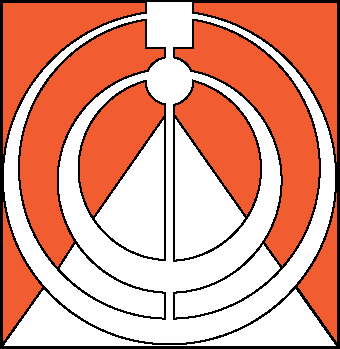Summer Course For Teachers Aims to Fire Kids Up About Engineering
Wednesday, September 14, 2016
Firefighters and doctors, teachers and veterinarians. That’s what children want to be when they grow up. Who ever heard a kid say they wanted to be an engineer?
That’s probably because most youngsters (and, sadly, most adults) don’t actually know what an engineer does. And why should they? Nobody goes to the engineer’s office for an annual checkup, and engineering is rarely part of the standard curriculum. Plus, how many TV shows can you name about the daring exploits of intrepid engineers?
Popular culture doesn’t pay much attention to engineering, notes Professor John Irwin. “Juno making it to Jupiter–that’s the closest most media people get to what engineers do,” he says. To help overcome that deficit, every other summer he teaches ENG 5100–The Engineering Process at Michigan Tech. For the past 11 years, middle and high school teachers have enrolle
d in this intensive, two-week course to learn some fundamentals of engineering and get ideas they can take back to their own classrooms.
The course, which was developed by Professor Emerita Sheryl Sorby, has always been popular. But since the new Next Generation Science Standards (NGSS) were adopted, it has attracted even more interest. NGSS requires teachers to introduce their students to basic engineering concepts, and most teachers don’t know much about engineering either. This year, Mi-STAR offered ENG 5100 scholarships so more teachers could begin incorporating engineering into their science classes.
“Mi-STAR is a perfect fit with what we’re doing,” says Irwin. “We’ve known all along the importance of getting kids interested in engineering before they get to college.”
The class starts with lessons on how to develop spatial visualization skills, which are essential for success in engineering. “Sheryl Sorby did tons of research that showed these skills are generally weaker in women and minorities, but they can be improved with simple exercises,” he said. “These teachers can help their students develop those skills and maybe find out they could be an engineer.”
During the second half of the class, the teachers tackle global issues—energy, infrastructure and transportation—by undertaking some small-scale engineering projects.
“Middle and high school students want to deal with big issues, s
o your projects have to tie into that,” Irwin said. This summer, the teachers built a model wind farm, a stronger concrete beam and a transport system for an egg. It wasn’t enough to complete the assignment and write a report. They had to think like project managers, finishing on time and under budget.
“I never thought I’d be doing something like this,” said Alice Gryspeerd, who teaches biology, chemistry and physical sciences at Romeo High School. “It’s a great experience. When our students take tests, they only answer to their teacher. But with a project like this, they’d have many more stakeholders. That kind of accountability could change how students approach their assignments.”
Marcus Re, a math teacher at Ewen–Trout Creek Consolidated Schools, worked on the egg project, aka the Hazardous Cargo Train Derailment. His team faced the same snafus as any group of engineering students. “We came up with five designs, and it took us awhile to get consisten
t results,” he said. They ultimately suspended their egg in a triangular framework, held it in place with rubber bands, and wrapped the whole contraption in a long yellow balloon. When they placed it on a cart and sent it careening down a 45-degree ramp into a wall, the egg survived intact.
“I can pass it on to a science teacher, but it could also be applicable to one of my math classes; they could calculate the forces involved,” Re said.
Dean Youngren, an elementary teacher, is also on the egg team. “Our design was successful and met customer requirements–though I don’t know how many people will be transporting eggs and treating them as toxic material,” he quipped. That said, exercises like this can help bring science classes into the 21st century.
“One of the big challenges for public schools is to revitalize their science curriculum,” said Youngren. “No Child Left Behind focused on reading, writing and math, so science and social studies were neglected.”
NGSS is changing that. “The new standards are wonderful, transformational, and a real challenge for teachers,” he said. “In the past, you’d buy the science kits for your class and you’d follow the guide.” It was straightforward, “but not even the teachers learn very much from that.”
“What we’re learning here will help our students solve problems like engineers, as well as test hypotheses and draw conclusions like scientists,” said Youngren. Opportunities like this for teachers to deepen content understanding and improve teaching practices are wonderful, and Michigan Tech does a great job of this.”
Tamala Sebring, a high school math teacher at L’Anse Creuse Public Schools, agreed.
“I love this class; it is really cool,” she said. “I want to be able to teach my kids how to apply science and math—to do engineering—and that’s what this class does. With these projects, we can challenge the brighter kids, and any kids who aren’t up to par can still get a lot out of it.
“Also, it gives them an introduction to engineering—a potential career path.”
ENG 5100 not withstanding, a lot of kids will probably still set their sights on becoming sports stars. But in a few years, maybe “engineer” will make the Top 10 list of what they want to be when they grow up.
GET Mi-STAR NEWS BY E-MAIL!
Copyright © 2024 Mi-STAR
Mi-STAR was founded in 2015 through generous support provided by the Herbert H. and Grace A. Dow Foundation. Mi-STAR has also received substantial support from the National Science Foundation, the MiSTEM Advisory Council through the Michigan Department of Education, and Michigan Technological University.




















